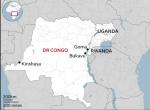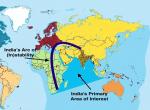Rampant sacrifice of hapless marginalised section of the society at the altar of ideology of development is too common to stir commotion in human sensitivity. The grotesque death scene of Mongol nomad Mergen whose head was crushed to pieces under the wheel of a 100-ton coal hauler in the steppes of West Ujumchin in Shilingol prefecture of Inner Mongolia Autonomous Region (IMAR) on 10 May is however symbolic for plenty of reasons. Mergen’s death first triggered protests at the local level and after the killing of a protester named Yan Wenlong by a Chinese miner Sun Shuning on 14 May the ongoing protests got further momentum and turned towards the major resistance movement in IMAR in recent decades. A large number of students from schools and universities rallied along with the herders in protest against indiscriminate mining in the grasslands and participated in a series of demonstrations in Inner Mongolia including the regional capital Hohhot and other big cities for more than fifteen days. The Chinese authority in the region has been struggling to avert outburst of ethnic riots that had irrupted in Tibetan areas of the country and Xinjiang capital Urumqi in 2008 and 2009 respectively.
Since last February when the so-called Jasmine Revolution began in east Africa and Middle East, communist leadership of China had continuously been worried about possible outbreaks of anti-regime movements in the country. In order to stop any major political unrest, the government authorities had taken all measures from arresting dissidents and right activists, increasing presence of public security personnel and armed police forces across the country to allotment of huge amount of funds for internal security. Defying all fears of possible infliction of coercive treatments by state authority, when the indigenous people of Inner Mongolia took to streets protesting against the killing of a herder from the northern steppes, the local leaders realized that use of forces might lead to a full scale inter-ethnic violence. Moreover, for many people in China the months of May and June are reminiscent of the bloodiest crack down of student protesters on the Tiananmen Square in 1989, and therefore the government takes utmost measures to forestall any unpleasant incident that might occur during these two summer months.
Historically, the nomads from the north had posed serious challenges to the Chinese empires originally confined in the central plane, and some of the ethnic groups like Mongol and Manchu whose ancestors once ruled China in different periods are still depicted unfavourably in Chinese historical narratives. With the fall of Manchu Qing empire in the Republican Revolution exactly a century ago, centrifugal forces irrupted in Mongolia, Tibet and Xinjiang, but it was the Mongolian people who were able to separate a large chunk of their territory and declared an independent state which is presently the Mongolian Republic. The Chinese communists drew lessons from the establishment of this independent Mongolian state and political development in Inner Mongol in shaping their minority policies during the anti-Japanese War and Civil War against the Kuomintang (KMT). Interestingly, Inner Mongolian Autonomous Region was created under the auspices of Communist Party of China (CPC) two years before the party actually established its political authority in Beijing.
Inner Mongolia was also a victim of early Han colonization and at present the Mongol population in the region is less than 20%. This demographic imbalance possibly help contain the Mongol resistance against agrarian expansion, forceful settlement of nomadic population, introduction of settled grazing, large scale grassland degradation, restriction on the use of Mongolian language and other repressive measures taken by the central government and Han rulers of the region.
For last sixty years the communist rulers of China have been exerting zealous efforts to transform the life of Mongols, Kazakhs, Tibetan herdsmen and other ethnic groups relying on nomadic pastoralism which is considered to be a lower level of social development. In the pre-reform period the central and local Han leaders made excesses in eradicating the language, customs and traditional mode of livelihood of the Mongol herders mainly for ideological reasons. The Mongolian leader Ulanfu, the only non-Han communist leader in China who ever rose to the highest echelon of communist elites, had tried to protect his people by striking an ideological balance. The Cultural Revolution (1966-1976) however provided a perfect opportunity for the Chinese colonizers to crack down upon the entire Mongol people. Over 16,222 people were killed according to official Chinese accounts and hundreds of thousands more were tortured in the Cultural Revolution period.1
Despite negative stigmas attributed to the nomadic life and inherent weaknesses of traditional mode of economy, grassland and livestock continue to be the primary marker of Mongol ethnicity. For original natives of Inner Mongolia, defending the grassland is equal to maintaining primordial differences with the sedentary Han agriculturalists. And this is the only way they can resist assimilation in their homeland swarmed by Han immigrants. Today grasslands in Inner Mongolia are increasingly seen not merely as a Mongol homeland but stand for environmental concerns of a bioregion.2 The Han scholars are also becoming aware of the importance of protection of nomadism which is suitable for ecological health of grasslands and contends that ‘establishing nomad rights is a good solution for the problems of Inner Mongolia as well as for other areas with similar grassland problems’.3 Unfortunately concern for environmental protection is as usual overlooked when economic policies of the state are primarily dominated by the logic of speedy development and making profit generation.
New ordeals befell on the Mongol nomads following the discovery of new coalfields between 2004 and 2007, when a major geological survey was undertaken in the region. The 10 May incident in Shilingol, where five big 10 billion ton coalfields were reported to have been discovered in 2006, manifests future of conflict of interests between the local herders and outside mining companies in Inner Mongolia.4 Indiscriminate exploitation of open-pit coal mine with outmoded technology and transportation of huge amount of coal in big haulers on underdeveloped highways cause environmental pollution, dust storm, underground water depletion and irreparable damage to the grazing fields. The Mongols of the region have reasons to be worried because the limited grasslands and vestige of nomadic culture that still remains even after more than hundred years of agricultural expansion and erroneous government policies would permanently vanish from the face of the earth if mining industry grows unabated.
Broadly speaking, Chinese government took conciliatory approach to subside the protest movements in Inner Mongolia. The culprits involved in the two killings were charged with homicide and murder. It appears that the authority have acknowledged the danger hidden in the rapid development of mining industry and accepted most of the demands of the protesters. The IMAR chairman Bagatur in an article published in the recent issue of CPC’s ideological journal Qiushi discussed that despite high GDP growth aspirations of all sections of people are not getting fulfilled. He categorically pointed out that a large number of Han entrants were engaged in mining coal with complete disregard of ecology of grassland in the region. Bagatur also emphasized the need for improving people’s livelihood.5 The Chinese official media also reported government’s intention to overhaul mining industry in Inner Mongolia. Only time will prove whether good intentions and genuine efforts prevail over the philosophy of ‘getting rich first’ or not.
- Uradyn E. Bulag, “Ethnic resistance with socialist characteristics”, in Elizabeth J. Perry and Mark Selden, eds., Chinese Society – Change, Conflict and Resistance, London and New York, Routledge, 2000, p. 188.
- Ibid. pp. 184.
- Wu Zhizhong and De Wen, “Pastoral nomad rights in Inner Mongolia”, Nomadic Peoples, Volume 12, Issue 2, 2008, p. 31.
- According to a Xinhuan report, with the discovery of 658.34 billion ton estimated coal reserve Inner Mongolia has surpassed Shanxi in terms of coal deposit. See http://invest.people.com.cn/GB/6090027.html and
http://www.china.org.cn/english/government/197680 - 曾昭 鹏,“《求是 》发表内蒙古自治区主席巴特尔文章:民生问题也是重大政治问题” http://www.zaobao.com/special/china/cnpol/pages4/cnpol110602
----------------------------------------
Published Date : 9th June, 2011









Post new comment